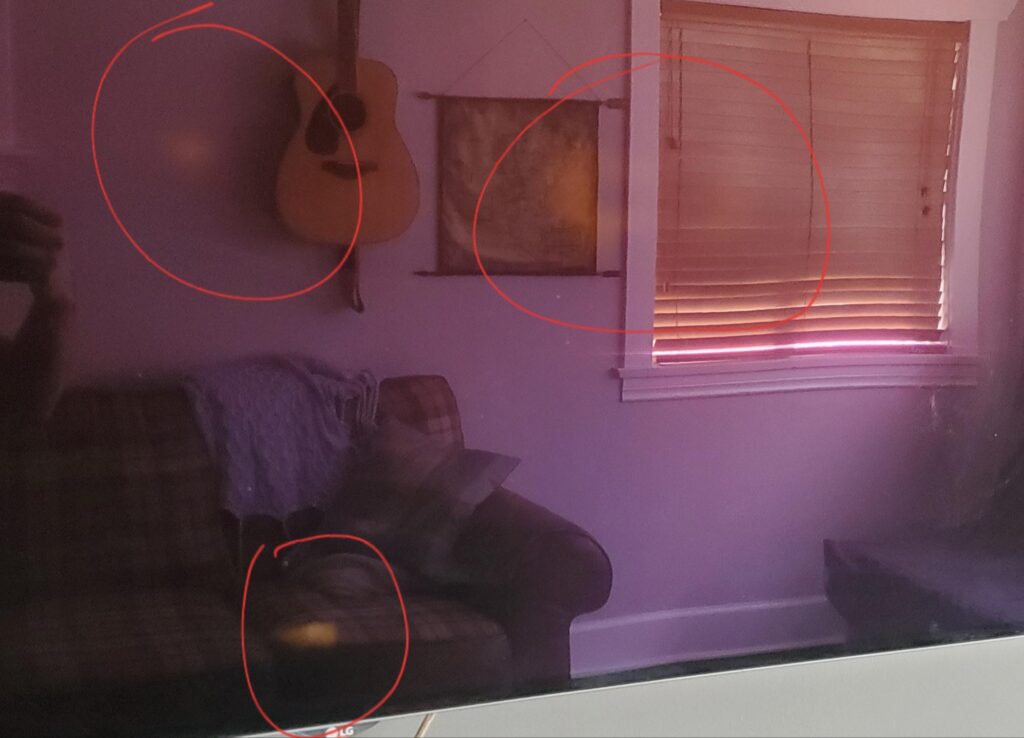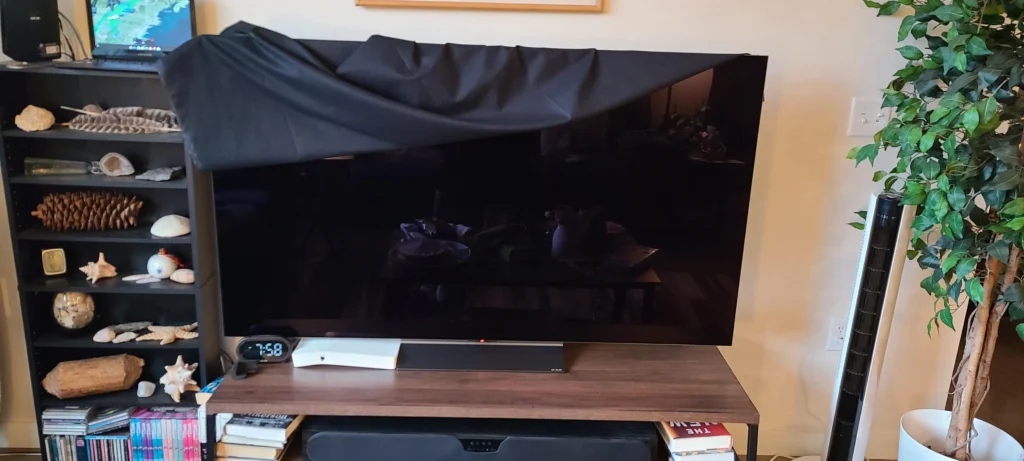Sunlight can damage your TV screen, causing issues like discoloration, spots, or a washed-out appearance. This happens when TVs are placed near windows or in direct sunlight. Heat and UV rays harm the screen’s components, affecting your viewing experience. This guide explains what causes sun damage, how to prevent it, and steps to fix it. We’ll also cover when to seek professional help or consider replacing your TV.
Understanding Sun Damage on TV Screens
What Causes Sun Damage?
Sun damage occurs due to prolonged exposure to direct sunlight. The main factors are:
- Heat: High temperatures can deform the TV’s plastic enclosure and break down liquid crystals in LCD screens, leading to physical damage.
- UV Rays: Ultraviolet rays degrade organic components in the screen, causing color shifts, fading, or a washed-out look over time.
These effects are gradual but can significantly reduce your TV’s lifespan and picture quality.
Types of TVs Affected
Most modern TVs, including LCD and OLED models, are susceptible to sun damage due to their use of organic materials:
- LCD TVs: Use liquid crystals that are sensitive to heat and UV rays, leading to discoloration or spots.
- OLED TVs: Use organic light-emitting diodes that can suffer from image retention or burn-in when exposed to sunlight.
- Older CRT TVs: Less common today, but they can also experience color issues from magnetic interference, though this is unrelated to sun damage.
Signs of Sun Damage
Look for these symptoms to identify sun damage:
- Discoloration or faded colors on the screen.
- Spots, blotches, or cloudy patches.
- Washed-out or less vibrant images.
- Image retention or burn-in, especially on OLED TVs.
- Physical deformation of the screen or plastic enclosure.
If you notice these issues, your TV may have been exposed to excessive sunlight.

Preventing Sun Damage
Prevention is the most effective way to protect your TV. Here are practical steps:
- Avoid Direct Sunlight: Place your TV away from windows, glass doors, or areas with direct sunlight. If relocation isn’t possible, use curtains, blinds, or shades to block sunlight.
- Use UV Filters: Install UV-blocking window films or screen protectors designed to reduce UV exposure. These can significantly lower the risk of damage.
- Control Room Temperature: Keep the room well-ventilated and avoid placing the TV near heat sources like radiators or fireplaces. Excessive heat can worsen sun damage.
- Turn Off When Not in Use: Power off your TV when not in use to minimize heat buildup and UV exposure.

Assessing the Damage
If you suspect sun damage, follow these steps to evaluate the issue:
- Inspect the Screen: Look for discoloration, spots, or uneven brightness. These are common indicators of sun damage.
- Test Different Content: Play movies, games, or static images to check if the issue persists across various displays.
- Check Settings: Adjust brightness, contrast, and color settings to see if the problem improves. Refer to your TV’s manual for guidance.
- Consult Manufacturer Resources: Check your TV’s user manual or the manufacturer’s website for troubleshooting tips specific to your model.
If the damage is minor, you may be able to improve the picture quality. Severe damage, however, often requires professional attention.
DIY Fixes for Minor Sun Damage
For minor sun damage, such as slight discoloration or image retention, try these DIY methods:
- Adjust Picture Settings: Modify brightness, contrast, color temperature, and sharpness in the TV’s settings menu. Reducing the backlight level or turning on the light sensor may help.
- Run Pixel Refresh (OLED TVs): If you have an OLED TV, use the pixel refresh feature to address temporary image retention. This may not fix permanent damage but can help with minor issues.
- Clean the Screen: Dirt or smudges can mimic damage. Use a microfiber cloth and a screen-safe cleaning solution to gently clean the surface. Avoid harsh chemicals that could worsen the damage.
- Apply a Screen Protector: A screen protector may mask minor imperfections and prevent further UV damage, though it’s more effective as a preventive measure.
Note: These methods may not work for severe damage, such as permanent discoloration or physical deformation, as these often involve internal component failure.
Professional Repair Options
If DIY fixes don’t resolve the issue, consider professional repair:
- Diagnosis: A technician will examine the screen to determine if the damage is repairable. This may involve checking the T-con board, backlight, or display panel.
- Cost: Repair costs vary depending on the TV model and damage severity. For example:
- Backlight Repair: $100–$150, including parts and labor.
- LED Strip Replacement: $100–$125.
- Screen Replacement: Often $200 or more, which may exceed the cost of a new TV.
- Warranty Check: Review your TV’s warranty. Most cover manufacturing defects but exclude environmental damage like sun exposure. Contact the manufacturer for clarification.
If repair costs are high, compare them to the price of a new TV. In many cases, replacement is more economical.
When to Replace Your TV
Severe sun damage, such as permanent discoloration or a deformed screen, may not be worth repairing. Consider replacing your TV if:
- Repair costs are close to or exceed the price of a new TV.
- The TV is outdated, and newer models offer better features, like improved anti-glare coatings or UV resistance.
- The damage significantly impacts your viewing experience.
When buying a new TV, look for models with:
- Anti-glare or anti-reflective coatings.
- Higher durability against heat and UV exposure.
- Advanced cooling systems for outdoor or bright environments.
For tips on choosing a new TV, check out How Long Do Samsung TVs Last? on Teckwiki.
Addressing Common Questions
Here are answers to common questions about sun damage on TV screens, inspired by related searches and user discussions:
Can sun damage be fixed at home?
Minor issues like slight discoloration may improve with settings adjustments or pixel refresh (for OLEDs). Severe damage typically requires professional repair or replacement.
How does sunlight affect TV screens?
Heat and UV rays degrade organic components, causing discoloration, spots, or burn-in.
Is it safe to place a TV near a window?
It’s risky unless you use blinds or UV filters to block sunlight. Even indirect sunlight through windows can cause damage over time.
What is the cost to repair a sun-damaged TV?
Costs range from $100–$200 or more, depending on the damage. Screen replacement is often not cost-effective.
Conclusion
Sun damage on TV screens can be frustrating, but prevention is the best approach. By placing your TV away from direct sunlight, using UV filters, and keeping the room cool, you can protect your investment. For minor damage, try adjusting settings or running a pixel refresh. For severe issues, consult a professional or consider replacing the TV. Regular maintenance and careful placement will keep your TV screen vibrant for years.
Additional Resources
- Fix Element TV Black Screen
- Fix Samsung TV Turning On and Off
- How to Reset Toshiba TV
- Fix LG TV Sound Not Working
- How to Fix a Broken or Cracked TV Screen

